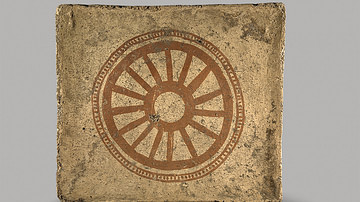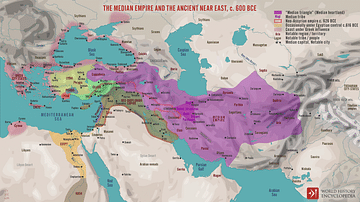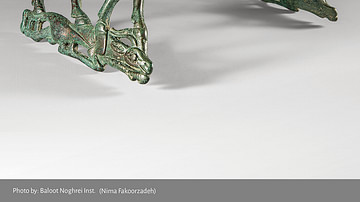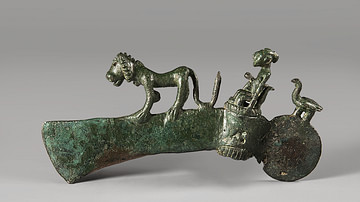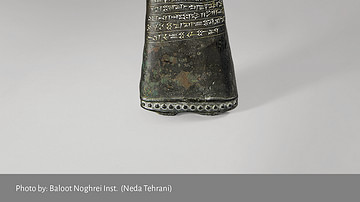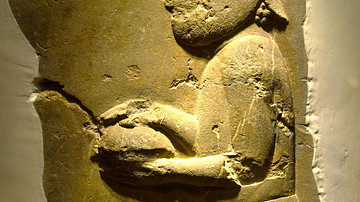Illustration
Seal impression from Nushi Jan Castle Complex, c. 650 BCE.
National Museum of Iran, Tehran, inv. no. 13145.
Median art has few remaining examples and almost none that seem free from the impacts of its regional predecessors and contemporaries. The seal impression here depicts an archer in the typical long robe of Mesopotamian kings. He is posed with his bowstring pulled, prepared to release an arrow from his stronghold represented by a pile of rocks. A compact, linear form of the winged 'sun' is spread over his head. The winged disk (recreating the sun, the moon, or a wheel) was among the most recurring visual signs of omnipotent, overarching, and protective power in Mesopotamian and Near Eastern art. Behind the archer curls a huge python holding a green shoot. In the mythical epics of Mesopotamian literature, such as Gilgamesh, the snake symbolises rejuvenation, resurrection, and immortality. Although this seal impression was found in an archaeological site associated with the Medians and well into the Iranian heartland, it is suggestive of strong links to the Mesopotamian, particularly Assyrian art, beliefs, and lifestyle.
External Links
Cite This Work
APA Style
Iran, N. M. o. (2024, March 06). Seal Impression of a Median Archer from Western Iran. World History Encyclopedia. Retrieved from https://www.worldhistory.org/image/18596/seal-impression-of-a-median-archer-from-western-ir/
Chicago Style
Iran, National Museum of. "Seal Impression of a Median Archer from Western Iran." World History Encyclopedia. Last modified March 06, 2024. https://www.worldhistory.org/image/18596/seal-impression-of-a-median-archer-from-western-ir/.
MLA Style
Iran, National Museum of. "Seal Impression of a Median Archer from Western Iran." World History Encyclopedia. World History Encyclopedia, 06 Mar 2024, https://www.worldhistory.org/image/18596/seal-impression-of-a-median-archer-from-western-ir/. Web. 06 May 2025.

